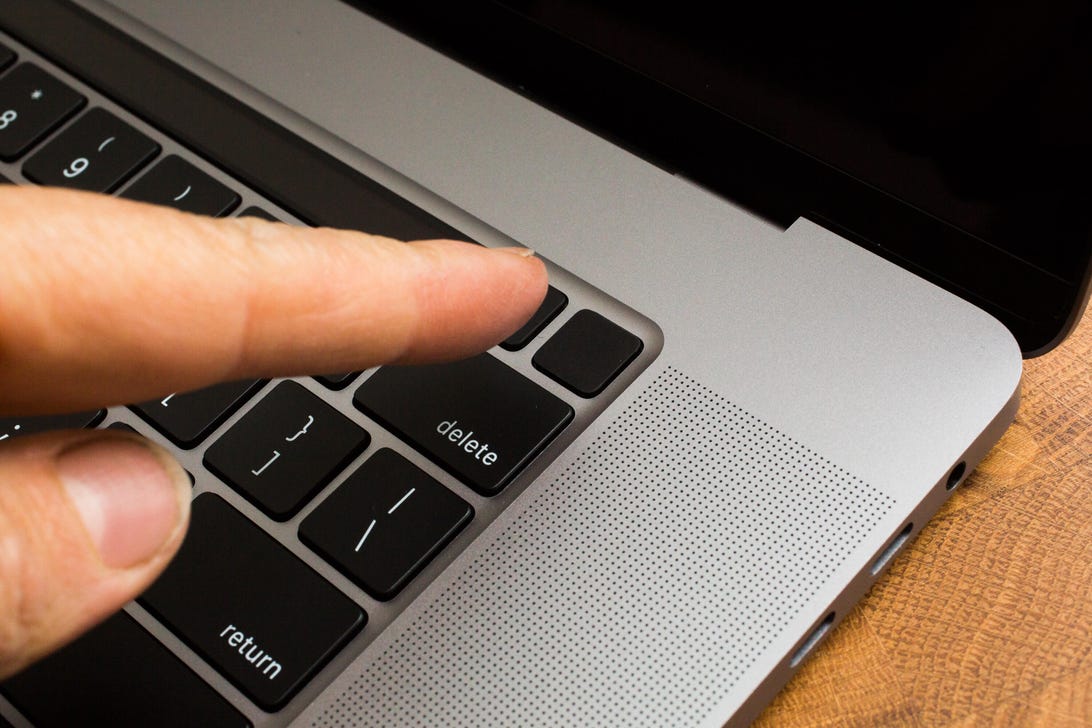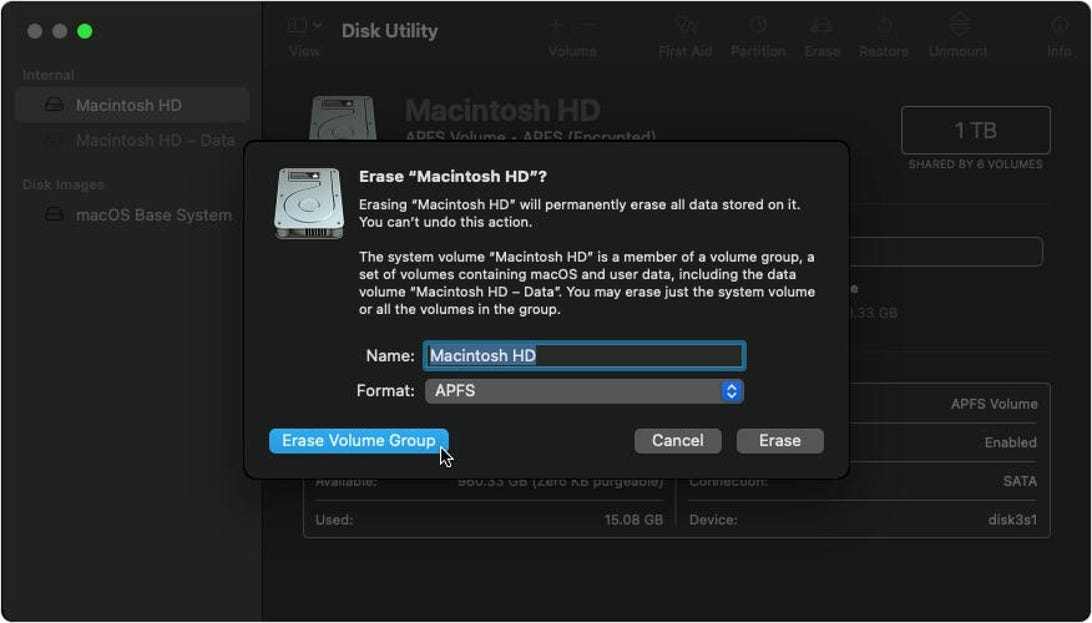How To Set My Macbook Pro To Factory Settings

Are you sure you wiped all your personal data off that Mac before you lot sell it off? Better double cheque.
Sarah Tew/CNETGetting tired of your old MacBook? Maybe y'all're looking to upgrade to a MacBook Pro 14 or 16, or maybe y'all're hopping into the desktop realm by preordering the newly announced Mac Studio. You could even have your center on the rumored M2 MacBook Pro that might go far subsequently this year.
But earlier you buy a new MacBook, you may be able to get some money past selling your old Mac to help defray the toll of a new one. However, you lot'll need to migrate your data to the new Mac and wipe that old one make clean first.
Read more: All-time MacBook for 2022
Whether you lot are giving your Mac to a friend or family fellow member, recycling or donating information technology to an organization, y'all'll desire to erase your personal information and files before departing with information technology.
Information technology's a crucial security measure you don't want to skip. Your Mac'southward difficult drive is bursting with sensitive information that you wouldn't want to be accessible, fifty-fifty if you trust your laptop'southward next owner. In that location'south always a chance that some malware could snake its style in and uncover your personal details.
Here's how to remove all traces of your data and render your old Mac to its default factory settings.
1. Sign out of your accounts
Later migrating your data to your new Mac ormaking one last fill-in to preserve your data, information technology's time to remove all traces of yourself from the machine. First, you'll demand to sign out of all of your accounts. Years agone, this was done using iTunes, but you now must individually sign out of three apps -- Music, Goggle box and Books. Open up any of those apps and go to Account > Authorizations > Deauthorize This Calculator. You'll need to enter your Apple ID and password and then striking the Deauthorize button.
Adjacent, you'll need to turn off Find My Mac and sign out of iCloud. Get to System Preferences > Apple tree ID, click iCloud in the left panel and then uncheck Find My Mac. Next, click Overview from the left panel so click the Sign Out button.
Lastly, you'll demand to sign out of Messages. Open the Messages app, go to Messages > Preferences, click the iMessage tab and then click Sign Out.
2. Bluetooth unpairing
If you're handing down your one-time Mac to your child or someone else in your house, then it's a adept idea to unpair any Bluetooth devices from it so your mouse or keyboard controls the new Mac and doesn't interfere with the old one. Go to System Preferences > Bluetooth, mouse over the device you want to unpair, click the Ten button to the right of its name, then click Remove.
3. Reset NVRAM
NVRAM is memory to which your Mac saves settings that information technology needs before loading MacOS: things like screen resolution, time zone, volume level and startup-disk selection. Sometimes these files can become corrupted, and then requite your Mac's adjacent owner a fresh showtime by resetting the NVRAM. To do so, close down your Mac, so plow it on and immediately printing and hold four keys together: Option, Command, P, and R. You can release the keys afterwards xx seconds or so. That's it! Your Mac's NVRAM has been reset.
4. Manufacturing plant reset
Yous need to put your MacBook ($399 at Amazon) into Recovery Mode in order to erase all of your data and reinstall MacOS. To enter Recovery Mode on an Intel-based Mac, restart it and immediately printing and concur Command-R. You tin release the keys once yous encounter the Apple logo.
(If yous are already setting an M1-based Mac, then booting into Recovery Style is slightly different. Yous simply printing and concur the power push until you see the startup options window, and so click Options and Continue to get to the utilities window.)

Next, you'll come across the MacOS Utilities window. Choose Disk Utility, click Continue and select your startup disk -- unless you renamed information technology, odds are it's labeled Macintosh HD or something similar. Next, click the Erase button at the summit of the Deejay Utility window and fill out these two fields:
- Proper name: Choose a proper noun for the fresh, new volume. Why non become with the tried-and-true Macintosh Hard disk?
- Format: ChooseAPFS.
If you are trying to sell an aboriginal Mac that has a mechanical difficult drive instead of a solid-country drive, then choose Mac Bone Extended (Journaled) for Format.
Adjacent, click theErase Volume Group and after Deejay Utility does its thing, quit Disk Utility. (If you don't see the Erase Volume Group button in the lower-left corner, then click the Erase button in the lower-right corner instead.)
You should return to the MacOS Utilities window. (If not, restart your Mac again, holding down Control-R while it reboots.) From the MacOS Utilities window, select Reinstall MacOS and follow the instructions to install the operating arrangement. After MacOS has been reinstalled, y'all'll be greeted by the Setup Assistant, which yous tin can and then quit out of and shut down your Mac. Information technology'southward now prepare for a fresh get-go with its next possessor.
Hither's how to factory reset an iPhone, how to reset AirPods that are acting up, and how to reset a Chromebook in nether a infinitesimal. Plus, check out every device Apple appear at its latest event.
How To Set My Macbook Pro To Factory Settings,
Source: https://www.cnet.com/tech/computing/how-to-factory-reset-macbook/
Posted by: stroudthimpiend99.blogspot.com


0 Response to "How To Set My Macbook Pro To Factory Settings"
Post a Comment